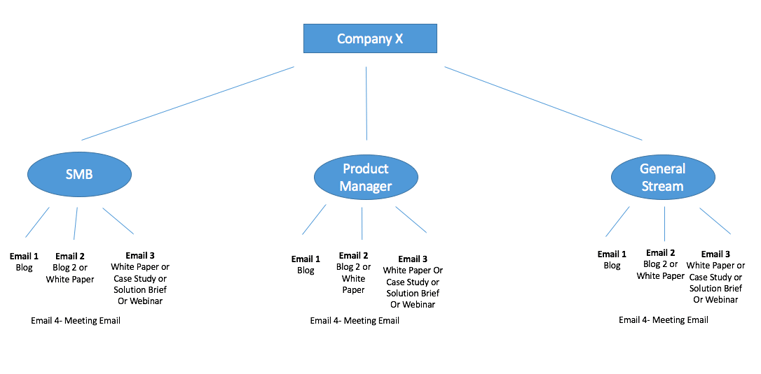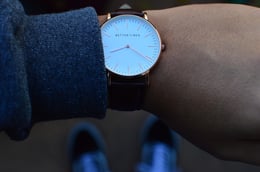
It’s quite simple to generate a long list of leads, the hard part is sealing the deal. It’s definitely easier said than done, but creating an effective B2B nurture email campaign will help you convert more leads into satisfied clients.
Just in case you’re new to this, Marketo defines lead nurturing as the process of developing relationships with buyers at every stage of the buyer’s journey. It focuses on communication efforts, listening to the needs of the prospects and providing them with the right information.
“On average, 50% of the leads in any system are not yet ready to buy” That’s where B2B nurture emails come in.
Here are some steps to help you plan, create and implement an effective B2B nurture email campaign that actually converts.
Step #1: Know Your Audience
Before you can start writing anything, there’s a lot of planning and strategizing that should go into creating your nurture campaign.
Start off by asking yourself and clearly defining: Who are my personas? What are their interests? Where are they in the buyer’s journey?
Don’t make the rookie mistake of creating one nurture stream. Each one of your personas can be in different market segments and will have extremely different needs. For example, if you’re targeting C-suite executives and small medium businesses (SMBs) they most definitely have different interests.
82% of prospects say lead nurturing content targeted to their specific industry is more valuable. (Source: MarketingSherpa)
Pushing identical nurture emails to both personas, no matter how great your content is, will cause disinterest not only in your emails, but in your product as a whole.
Once you understand your audience, it’s safe to move on.
Step #2: Map it out
Once you know who you’re targeting, creating a visual map will help you understand the entire nurture process and how it brings leads further down the funnel. Here’s an example:
In example below, you can see that Company X has 2 personas that I defined in step #1- Small Medium Businesses and Product Managers. I also created a general stream of emails, just in case I have leads coming in that don’t necessarily fit into existing personas. It’s important to remember that as your products evolve over time, new personas may be created. By creating a general stream, you’re not excluding any leads that may not fit into a defined persona.
For each persona it’s common practice to create between 4-6 emails. Don’t forget: Every email should be created around a piece of content or question you’re trying to answer.

Email #1: As you start off with the first email, make sure to write the email around a piece of non-gated content. This can be a blog, infographic or anything that doesn’t involve the reader to provide personal information. You don’t want to scare them off just yet by asking them too many questions.
Email #2: In a perfect world, it’s better to send out gated content in Email #2, in order to learn more about your leads. But depending on how much content you have, the second email can also be based on an additional piece of non-gated content (Case Study, Solution Brief, blog). If you don’t have a lot of relevant gated content at this point, blogs are still informative and helpful to readers.
Email #3: At this stage in the game, the email should ideally include some sort of gated content. This can be a Case Study, Solutions Brief, webinar recording, e-book etc. If your content isn’t gated, try to create a landing page and infrastructure behind your content. We use HubSpot to help us create the necessary forms, which categorizes what stage in the buyers journey the lead is based on specific own conditions. At this point in the process, it’s crucial to get more information about your leads, so start fishing!
Email #4: This email is optional, but has personally proven to be extremely effective. Sometimes people respond better when you’re more direct and to the point. In this email, ask them if they’re free to talk about your company’s product or solution at a specific time.
Step #3: Segment Content
Take a step back, and look at all of the content your company has created. Have they put out any recent blogs? Whitepapers? Ebooks? Case Studies? Or Infographics.
It doesn’t matter if you have an abundance of content, or only a few good pieces, the key to this step is weeding out relevant content for each one of your personas.
Sorting through all of your content should take a good amount of time. You want to pick your content wisely to immediately engage the reader, otherwise, they’ll quickly click the erase button and probably ignore future emails.
Step #4: Timing is everything

In order to prevent any frustration or annoyance on the reader’s behalf, it’s really important to properly space out your emails. Realistically, your leads will not be excited to hear from you every day.
But....we did notice that if you send a follow up email (in addition to the standard "thank you for downloading...." email) within 30 minutes of a contact downloading a resource the chances for increasing your click-through rates of this 2nd email increases significantly.
So even though best practices normally say that a lead isn't quite ready to “tie the knot” just yet and, hearing from you too promptly and too often, it will definitely be a turn-off, we found this tactic to improve our client's conversion rates as the company is on top of the mind. The key though is including an enticing offer in this second email.
Once this 2nd email goes out, set up a regular schedule for emails in your campaign. Setting a 4-6 day gap between emails is recommended but do pay attention to the results to know when is the optimal length of your nurture campaign.
Step #5: Create a Catchy Subject Line
Don’t waste this opportunity to grab your leads’ attention. Believe it or not the subject line is absolutely critical! Without a good subject line, there’s a high chance your email won’t even be opened.
Try asking a question, sharing a stat, or even using action words to win over their attention. Take a look at these free tools to help you optimize your subject line.
Step #6: Use Casual Tone & Personalization
Don’t forget that every lead is a person. Personalization of emails is essential in engaging individual leads throughout their buyer’s journey. We use HubSpot’s “personalization token” tool for first name personalization in all of our emails. Let’s be honest- you’re more likely to read an email if you see it’s addressed to you, right?
Personalization has proven to drive engagement, and according to the 2014 Science of Email Marketing Report, simply having the first name personalization increases your click-through rate from about 5.8% to about 7%.
Step #7: Proofread, Proofread, Proofread!
It may sound really obvious to proofread, but you’d be surprised how many emails are sent out with typos and grammatical errors. For this reason, get as many colleagues and friends to read over your emails before you press send.
Personally, I slowly read the emails out loud, as it helps me notice any possible errors.
There you have it! 7 actionable, useful steps to take into consideration when creating your next and best B2B nurture email campaign.

by The Penguin Team on March 15, 2016
As a leading B2B digital marketing agency, We help B2B Technology Companies, enterprise software, and hardware companies increase brand awareness, reach more qualified leads and close more customers. Penguin Strategies is a Diamond Partner of HubSpot.






